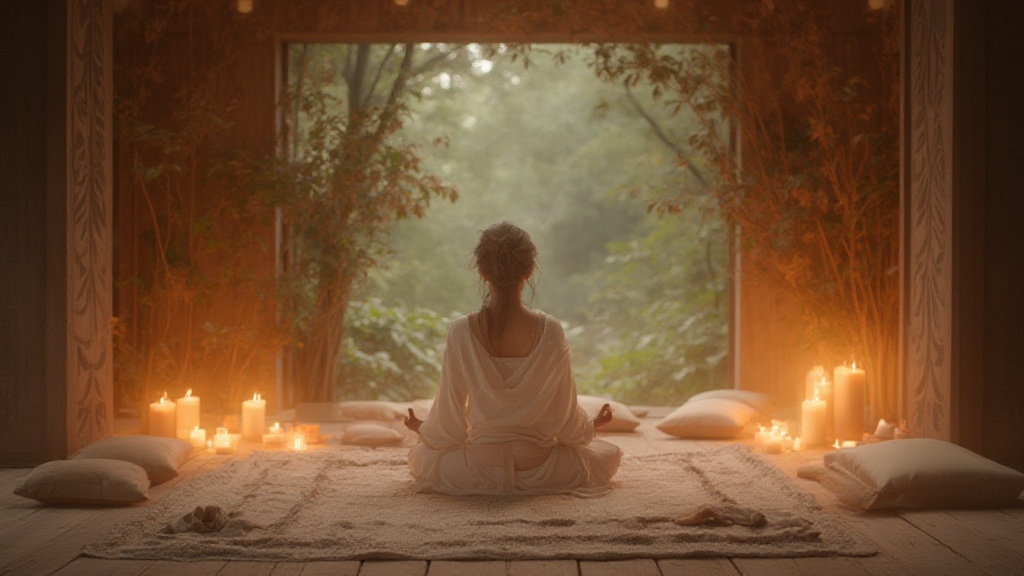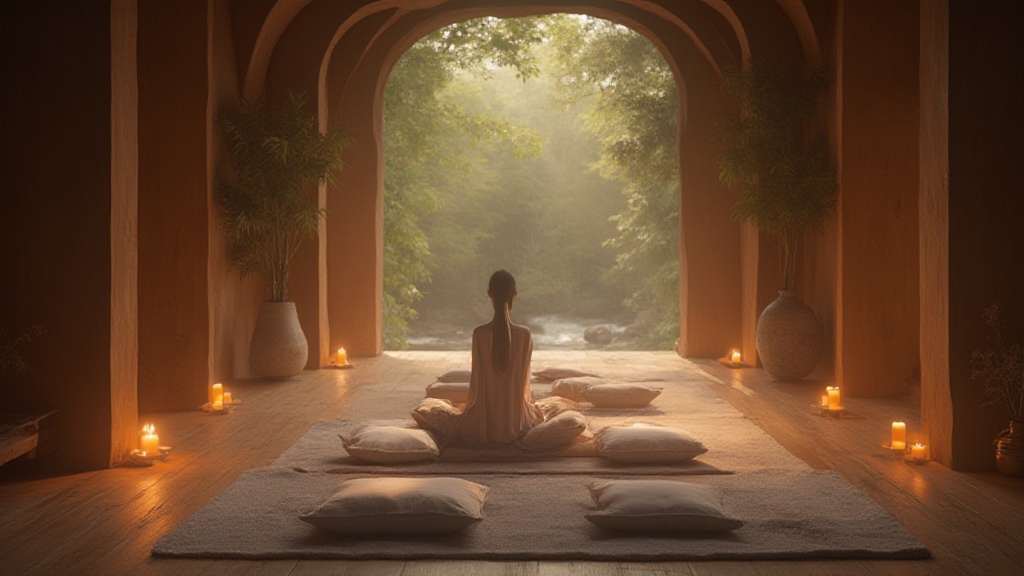
Autogenic relaxation serves as a self-directed method that helps cultivate calm. This technique, deeply rooted in therapeutic practices, engages mental imagery and body awareness, fostering a tranquil mind.
Regularly incorporating autogenic relaxation into your routine can significantly reduce stress levels, enhancing mental clarity.
To begin, allocate a few minutes each day to focus on your breathing while visualizing restful scenes.
Establishing a peaceful environment, complemented by soothing sounds or quiet, promotes a deeper relaxation response. With consistent practice, you can develop emotional balance, effectively managing stress and improving overall well-being.
Understanding Autogenic Training Techniques
Exploring autogenic training techniques can enhance your stress management capabilities significantly.
Techniques including visualization, deep breathing, and muscle relaxation not only reduce anxiety but also foster emotional wellbeing. Integrating these methods with mindfulness exercises encourages greater self-awareness and resilience.
Initiating your practice with brief sessions builds comfort and allows you to gradually increase duration without feeling overwhelmed.
As you grow accustomed to these calming techniques, maintaining consistency becomes essential for maximizing the benefits.
Implementing a cohesive practice ensures that you remain engaged in your journey toward improved mental health and relaxation.
Effective Strategies for Autogenic Training
Applying effective strategies for autogenic training enhances relaxation experiences. Start by creating a quiet environment where you can focus without distractions.
Incorporate soothing sounds or engage in guided sessions to facilitate deeper relaxation. As you practice focus techniques, direct your attention to your body’s sensations, promoting increased self-awareness.
Gradually, these methods can become key elements in your self-care routines, contributing positively to your physical health and mental health.
Building a Routine
Establishing a routine around autogenic relaxation practices is essential for effectiveness.
Schedule a specific time each day for your practice, ensuring consistency in your efforts.
Start slowly, allowing your body to adapt to these relaxation skills. Over time, integrate additional elements such as positive affirmations or journaling feelings to enhance the overall experience.
By nurturing a peaceful environment and committing to regular practice, you will likely discover profound relaxation benefits in your daily life.

How Can Stress Management Help You
Effectively managing stress significantly contributes to maintaining physical health and emotional wellbeing. Chronic stress adversely impacts health, potentially leading to serious conditions, including cardiovascular problems and digestive disorders.
Implementing relaxation techniques, such as mindfulness meditation and progressive muscle relaxation, effectively reduces stress and enhances overall health.
For instance, a daily routine may begin with mindfulness meditation for 5-10 minutes in the morning, followed by progressive muscle relaxation during a lunch break, and concluding with deep breathing exercises before bedtime.
Consistent practice of these methods is essential for fostering a peaceful state of mind and improving sleep quality.
Essential Relaxation Techniques To Try
Incorporating effective relaxation techniques into your daily routine enhances emotional balance and overall wellbeing. Techniques such as deep breathing and visualization play a significant role in reducing stress and promoting a tranquil mind.
One effective method is progressive muscle relaxation, which can be learned and practiced anywhere. To start, locate a quiet environment, tense each muscle group for several seconds, and then release the tension to experience a profound sense of relaxation.
Regular practice of these techniques cultivates body awareness and supports personal growth, leading to lasting stress reduction and a more fulfilling life.
Stress Management
- Chronic stress can lead to serious health issues, including heart disease and gastrointestinal problems.
- Mindfulness meditation has been shown to reduce stress levels and improve emotional wellbeing.
- Progressive muscle relaxation can be practiced in any quiet environment, making it accessible for daily use.
- Regular use of relaxation techniques enhances body awareness and promotes personal growth.
What Are Mindfulness Exercises Benefits
Mindfulness exercises offer a range of benefits that significantly aid in stress and anxiety relief. These practices promote awareness of the present moment, allowing individuals to recognize their stressors more effectively.
Enhanced emotional regulation, achieved through mindfulness, can lead to reduced anxiety levels.
Integrating mindfulness with relaxation techniques, such as deep breathing and progressive muscle relaxation, provides a holistic approach to managing stress.
For example, a simple mindfulness exercise involves finding a quiet environment, closing your eyes, and focusing on your breath. Inhale deeply through your nose, hold briefly, and exhale through your mouth, repeating this for five minutes.
This daily practice fosters body awareness and emotional wellbeing.
Exploring Selfhypnosis For Anxiety Relief
Self-hypnosis serves as an effective tool, complementing previous relaxation methods. This practice enhances overall effectiveness by allowing individuals to achieve a deep focus that disengages them from anxiety-provoking thoughts.
Self-hypnosis strengthens the benefits derived from deep breathing techniques, producing a more profound relaxation response.
A beginner’s approach might include finding a quiet space to minimize distractions, closing your eyes, and performing deep breathing to relax your body.
Aim to visualize a peaceful state while repeating calming affirmations, such as “I am relaxed and at peace. ” Gradually bring your awareness back by opening your eyes to conclude the session, promoting personal growth and self-discovery in your relaxation practices.
| Mindfulness Exercise Benefits | Self-Hypnosis Benefits |
|---|---|
| Reduces stress and anxiety levels | Enhances deep focus |
| Promotes present moment awareness | Strengthens relaxation response |
| Improves emotional regulation | Encourages personal growth |
| Can be combined with relaxation techniques | Utilizes calming affirmations |
Incorporating Deep Breathing In Practice
Deep breathing serves as a fundamental element in relaxation techniques. Practicing deep breathing enhances mental clarity, primarily by increasing oxygen flow to the brain.
This practice also aids in emotional regulation, as deep breathing significantly helps reduce anxiety and promote calmness.
To practice deep breathing, find a comfortable position and follow this structured exercise:.
- Step 1: Sit or lie comfortably, closing your eyes if desired.
- Step 2: Inhale deeply through your nose for a count of four.
- Step 3: Hold your breath for a count of four.
- Step 4: Exhale slowly through your mouth for a count of six.
- Step 5: Repeat this cycle for five minutes.
Integrating deep breathing into your daily practice reinforces calmness and can be done in various quiet environments, making it an accessible method for wellness.
The Role Of Visualization In Relaxation
Visualization serves as a powerful tool that complements mindfulness exercises discussed previously. These techniques enhance relaxation, effectively focusing the mind away from stressors. Engaging in visualization creates a peaceful state through serene mental imagery. This practice can heighten the effectiveness of other relaxation methods. To incorporate visualization into your routine, try this simple exercise:
- Step 1: Find a quiet space and close your eyes.
- Step 2: Picture a peaceful scene, such as a beach or forest.
- Step 3: Engage all your senses in the imagery, including sounds, smells, and feelings.
- Step 4: Maintain this visualization for five to ten minutes.
Regular practice of visualization not only deepens relaxation experiences but can also amplify the benefits of other relaxation methods.
- Deep breathing can lower stress hormones, leading to a more relaxed state.
- Studies show that deep breathing techniques can improve focus and cognitive performance.
- Visualization has been linked to reduced anxiety and improved emotional well-being.
- Regular practice of relaxation techniques, including deep breathing and visualization, can enhance overall mental health.
Creating A Quiet Environment For Peaceful State
Establishing a calming atmosphere is essential for relaxation techniques, particularly in stress management. A well-structured environment effectively lowers cortisol levels, contributing to anxiety relief and mental health enhancement.
Your surroundings directly influence your ability to relax; thus, focusing on sound management and light adjustments can lead to a more tranquil mind.
Practical changes, such as incorporating soothing sounds or adjusting lighting, significantly impact stress reduction.
- Sound Management: Consider using white noise machines or calming music to mask disruptive sounds, enhancing your relaxation response.
- Light Adjustments: Maximize natural light while utilizing soft lighting to create an inviting atmosphere, promoting emotional wellbeing.
- Aromatherapy and Nature: Introduce essential oils and plants to enhance the space, fostering emotional balance and overall mental health.
By consistently integrating these practices, individuals can cultivate a more peaceful environment, reinforcing their relaxation skills and contributing to holistic wellness.
Supporting Facts for Creating A Quiet Environment
- Research shows that exposure to calming sounds can lower blood pressure and promote relaxation.
- Studies indicate that natural light exposure boosts mood and enhances productivity, reducing feelings of stress.
- Aromatherapy has been found to decrease anxiety levels and improve overall mental health through the use of essential oils.
- Creating a peaceful environment can lead to better sleep quality, which is essential for effective stress management.
